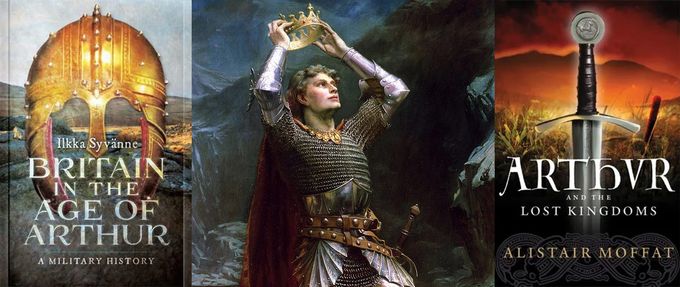As one of the most prominent figures in medieval European history, the legends of King Arthur have captivated the world since the stories first became popular in 11th century Wales. French and Welsh literature weave a complicated and bewitching tale of a valiant king, his knights, and their quest for the Holy Grail. Intertwined throughout Arthurian legend are echoes of Celtic and Irish folklore and references to early Christianity.
Centuries of myths, research, and archaeological discoveries have expanded the legends of King Arthur exceptionally. A curious mind may find themselves overwhelmed by all there is to learn about Arthur and his knights. Fortunately, the following titles are a collection of thoroughly researched books about King Arthur that may help to answer the question that has vexed historians for centuries: Is Arthurian legend a matter of fact or fiction?
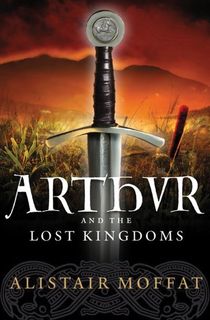
Arthur and the Lost Kingdoms
In Arthur and the Lost Kingdoms, Alistair Moffat disrupts all prior assumptions about the legendary King Arthur. Moffat’s thought-provoking book details a fascinating new history of the legend’s life and—just maybe—proof of his existence. With detailed references to historical documents, literature, archeology, and cultural anthropology, Moffat clears the smoke and mirrors to reveal the true nature of King Arthur, which just might shock you. Moffat looks under rocks that previous historians left unturned and weaves a new story in the process, possibly even solving one of the western world’s oldest mysteries once and for all.
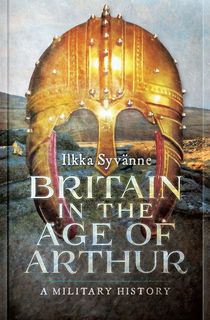
Britain in the Age of Arthur
With the perspective of a specialist in late Roman military history, Dr. Ilkka Syvanne offers a unique explanation of Arthur’s life in the context of the recorded history of Europe and Britain during the same time period. Syvanne attempts to separate the man from the myth, and comes to the conclusion that many of the legendary stories are, according to the wider military history of Europe, based in truth. Key moments in Arthur’s military career, as preserved in Geoffrey of Monmouth’s account, can be connected to recorded events in European and British history. Syvanne describes just what this connection unveils about European history and the truth behind the legends of King Arthur.
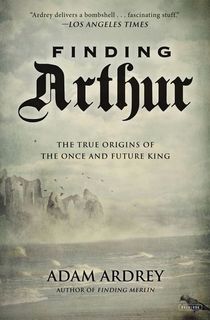
Finding Arthur
What if the truth of King Arthur has been hidden for so long because historians have been looking in the wrong place? Adam Ardrey argues that Arthur was not an Englishman, but a Scot. While studying a Scottish clan, Ardrey uncovers symbols of Arthurian legend existing in plain sight in the Scottish Highlands. The Lady in the Lake, the Sword in the Stone, the Round Table: All are based on real and accessible places in Scotland. How does this discovery change the search for the truth? In Finding Arthur, Ardrey rewrites the legend of King Arthur with new and fascinating evidence in mind.
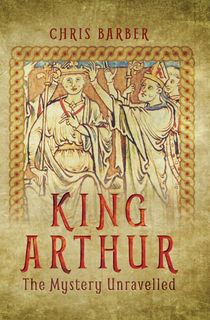
King Arthur
Chris Barber has set out to reveal the true identity of King Arthur, the man behind the romantic and fantastical embellishments accrued over time. After three decades of research and piecing together the complicated puzzle of Arthurian myth, legends, and written history of the Dark Ages, Barber not only identifies King Arthur, but traces him to an ancient heritage in South Wales. Evidence such as stone inscriptions reveal the names and locations of Arthur’s court, family and companions, battle sites, and the location of the legendary king’s final resting place.
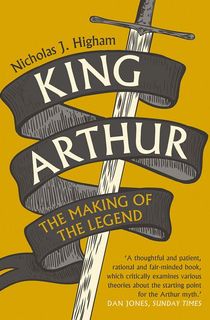
King Arthur
Many historians have shrugged off the possibility of King Arthur’s existence as anything but myth, but Nicholas J. Higham’s King Arthur takes the debate a step further. Higham deconstructs Arthurian legend to prove that Arthur is no more than a story, but does not stop there. Higham reaches beyond that distinction to answer the question of why the legend of King Arthur came to exist at all. By delving into each of Arthur’s proposed origin stories, Higham debunks many of the theories surrounding Arthur’s existence and instead shifts his focus to Arthur’s presence in Wales, which just might reveal the true origins of King Arthur’s character and legacy.
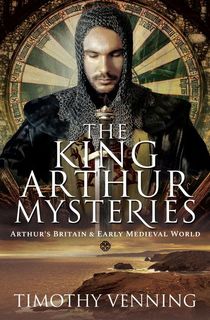
The King Arthur Mysteries
Whether King Arthur was a genuine historical figure or simply myth made legend, the mystery surrounding Arthur and his court is certainly intriguing. In The King Arthur Mysteries, Timothy Venning leaves no stone unturned and no theory unresearched. With a foot in each camp, Venning entertains the most prominent Arthurian theories crafted on both sides of the argument. Venning analyzes fantasy as well as the history, and his study spans from the earliest accounts of Arthur’s feats to the legend’s portrayal in modern literature, film, and television. Scholarly yet accessible, The King Arthur Mysteries unravels one of the most complex pieces of medieval British history and culture.
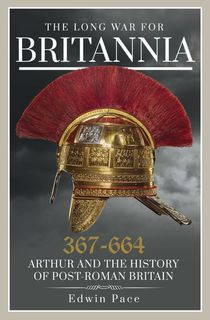
The Long War for Britannia 367–664
King Arthur’s military conquests have long since been mythicized, but many of the stories forget the greater context of the battles Arthur is thought to have waged. Edwin Pace recounts two centuries of British history with uncanny proof of the legitimacy of these early records, and how history came to perceive them as illusory. Accompanying these early military records are accounts of King Arthur and the Uther Pendragon from different British regions during the time period that paint Arthur as hero and villain. The records Pace studies are authentic and yet radically different in their depictions of the fabled king, and, as Pace reveals, history has been shaped around them.
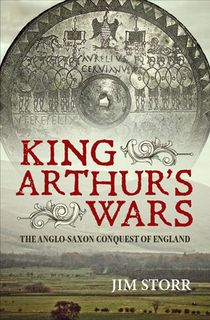
King Arthur's Wars
Uncovering one of the biggest archeological discoveries of modern western civilization, Jim Storr’s research offers an end to the speculation that has surrounded the Anglo-Saxon conquest of Britain after Rome. With little written history about the time period, much of the public knowledge of the time period remains muddled. In King Arthur’s Wars, Storr studies the English countryside and reveals just how the Anglo-Saxons conquered the island in startling detail. By analyzing maps, place names, and the lingering colloquialisms among the locale, Storr grasps the truth and shares it at long last.

The Quest For Arthur's Britain
In The Quest for Arthur’s Britain, Geoffrey Ashe examines the historical roots of Arthurian legend. Ashe details the shocking revelations uncovered as a result of archaeological excavations at Tintagel, Glastonbury, and Cadbury, the area rumored to have once been called Camelot. With physical evidence to analyze across these sites and other locations reputed to have housed Arthur and his men, Ashe establishes that the King Arthur myth is supported by fact, not just fiction.
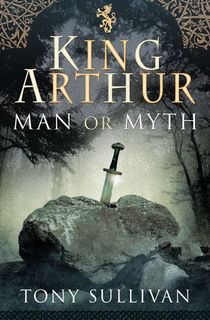
King Arthur
With centuries of legends, research, and theories about King Arthur, it is difficult to weed out fact from fiction. Tony Sullivan’s King Arthur: Man or Myth presents an organized, chronological collection of the facts, theories, and myths surrounding Arthur in one comprehensive guide. Beginning in Roman Britain and tracking Arthurian legend through elements such as Camelot, Excalibur, and Merlin, Sullivan utilizes sources like Gallic Chronicles and Historia Brittonum to piece the story together. Sullivan also poses the important question not only of King Arthur’s existence, but if all the legends are true, and the extent of the role that Arthur may have actually played in them.
Featured photo: Charles Ernest Butler via Wikipedia
